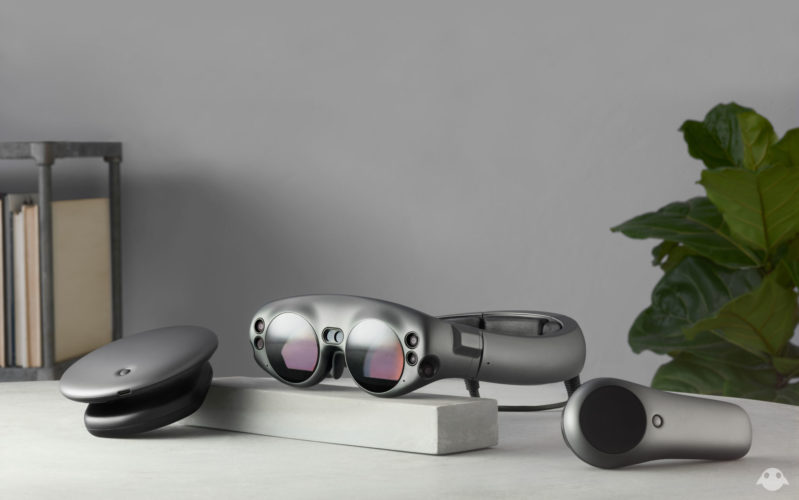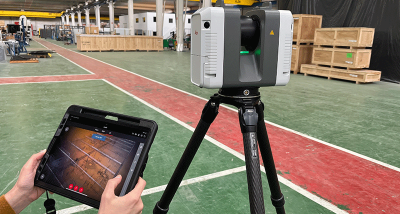It’s been a long road for Magic Leap—and those of us following the device’s development in hopes that it would prove as magical as they say—but the day has finally arrived. Magic Leap One Creator Edition is now shipping. Now you can see for yourself if it lives up to the breathless expectations.
Before you plonk down the $2,295 for the headset, there are a few caveats. You need to register as a developer and you need to live in one of a handful of major American cities where Magic Leap offers the LiftOff service for delivery, fit, and set up. You’ll also need to be a legal adult, so all four or five of SPAR 3D’s 17-year old subscribers can stop reading now.
The Magic Leap One ships with a headset, a circular computer, and a controller you hold in one hand. As for software, it includes a whole compliment: the Social application, which offers a “spatially aware way to connect, collaborate and feel presence across distance,” the Screens video player for placing 2D screens in a 3D space (like pinning a virtual TV to a wall), and the LuminOS operating system, which offers an SDK and development tools and some kind of machine-learning and middleware functionality.
More notable for users of commercial 3D data, it also includes the Helio web browser, which enables users to grab 3D data from the web and project it into the real world. Magic Leap suggests that you might project a 3D model of a wayfair chair (you know, for furniture shopping) or an object from a NY Times story. Theoretically, this is the browser that you’ll use to download a 3D model of that structure you’re working on and project it out in the conference room.
Now, the big question: Is it everything they say it is? According to an article published today in MIT Technology Review the answer is… mostly. Editor Rachel Metz traveled to Florida a bit before the release to try out a few demos, and found the experience to be much better than you would expect based on Magic Leap’s disappointing demo videos.
Describing one of the demos, in which yellow alien robots walk out of a portal in the wall in front of her, Metz said,
“Whenever I shoot a robot, it falls to the ground in a heap. I stand over one and inspect its remains: the color isn’t bullet-proof, but it looks reasonably solid. At one point Abovitz had told me I’d need to really try it for myself to understand what he’s built, and he’s right: these robots (and most everything else I check out) look a heck of a lot better than on a flat display.”
She reports problems, too. The device’s object occlusion is spotty and it has trouble displaying 2D screens when the viewer is up close. The visuals tend to dissociate into red, green, and blue when you move your head too quickly. The FOV is only 50°, which is more than Microsoft’s HoloLens, but still less than half of the human field of vision.
But remember—it’s a developer’s version. It just has to work well enough for the creative types out there to develop the killer AR app. By the time that happens, Magic Leap’s device could be ready for the spotlight. Unfortunately, that means we still have to wait to see how it all washes out.










